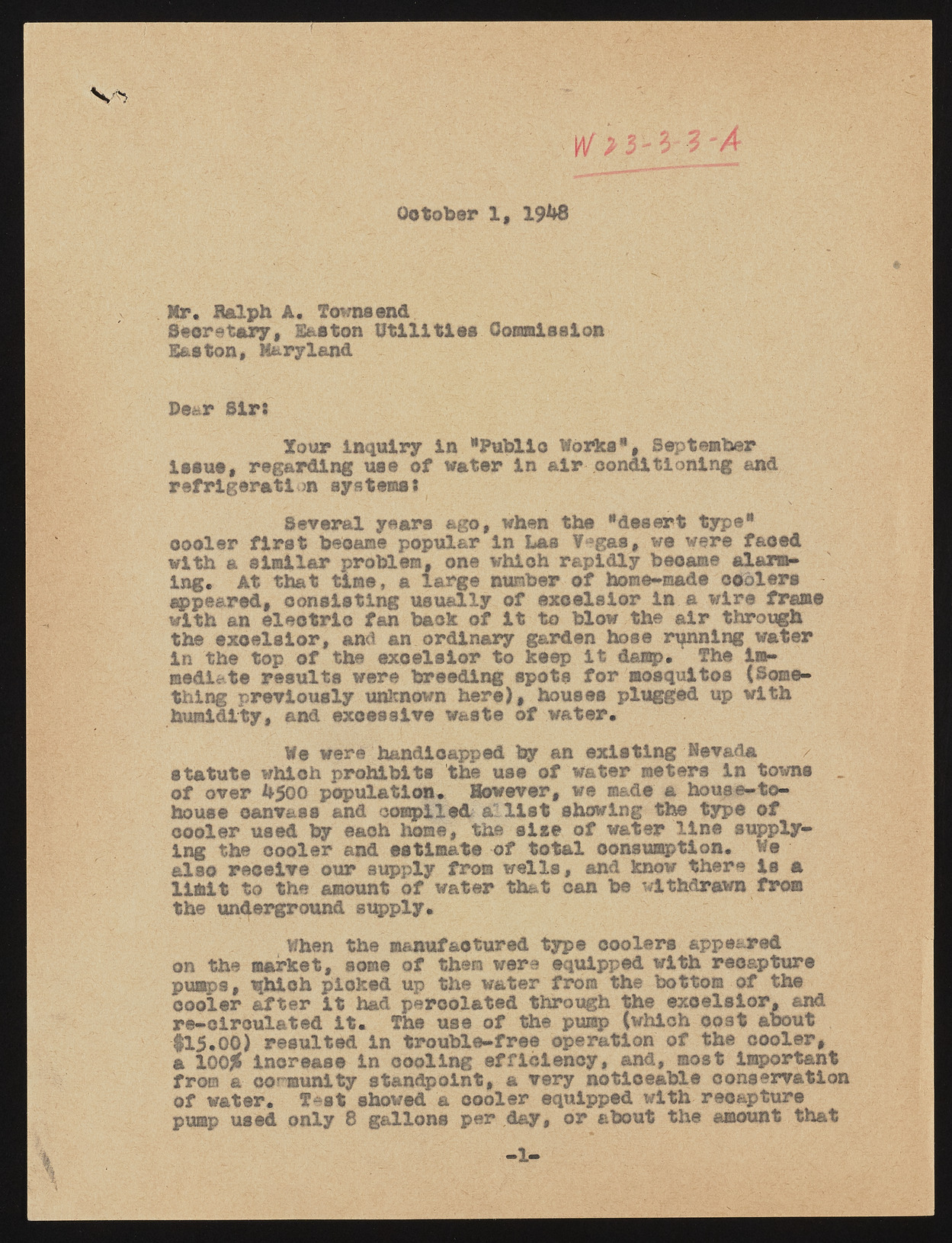Copyright & Fair-use Agreement
UNLV Special Collections provides copies of materials to facilitate private study, scholarship, or research. Material not in the public domain may be used according to fair use of copyrighted materials as defined by copyright law. Please cite us.
Please note that UNLV may not own the copyright to these materials and cannot provide permission to publish or distribute materials when UNLV is not the copyright holder. The user is solely responsible for determining the copyright status of materials and obtaining permission to use material from the copyright holder and for determining whether any permissions relating to any other rights are necessary for the intended use, and for obtaining all required permissions beyond that allowed by fair use.
Read more about our reproduction and use policy.
I agree.Information
Digital ID
Permalink
Details
Member of
More Info
Rights
Digital Provenance
Publisher
Transcription
October 1, 19^8 Mr. Balph A. Townsend Secretary, E&ston Utilities Commission Easton, Maryland Dear Sirs lour inquiry in "Publics Works % September issue, regarding use of water in air conditioning and refrigeration systems? Several years ago, when the "desert type* oooler first became popular in baa Wegas, we were faced with a similar problem, one whioh rapidly beoame alarming. At that time, a large number of home-made coolers eppe&red, consisting usually of excelsior in a wire frame with an electric fan back of it to blow the air through the excelsior, and an ordinary garden hose running water in the top of the exoelsior to keep it damp. The immediate results were breeding spots for mosquitos (Something previously unknown here), houses plugged up with humidity, and excessive v&ste of water. We were handicapped by an existing Nevada statute which prohibits the use of water meters in towns „ of over b5G0 population. However, we made a house-to- house canvass and compiled allist shewing ths type of cooler used by each home, the else of water line supplying the oooler and estimate of total consumption. We also receive our Supply from wells, and know there is a limit to the amount of water that can be withdrawn from the underground supply. When the manufactured type coolers appeared on the market, some of the® were equipped with recapture pumps, trhioh picked up the water from the bottom of the oooler after it had percolated through the excelsior, and re-oiroulated it. Ths use of the pump (which coat about $15.00) resulted in trouble-free operation of the cooler, a l00)j increase in cooling efficiency, and, most important from a community standpoint, a very noticeable conservation of water. Test showed a oooler equipped with recapture pump used only 8 gallons per day, or about the amount that

